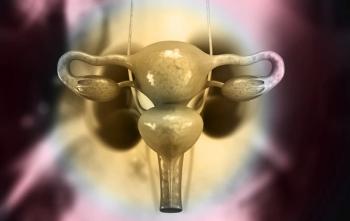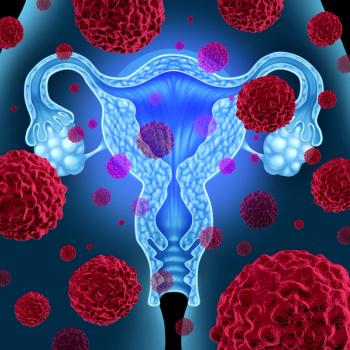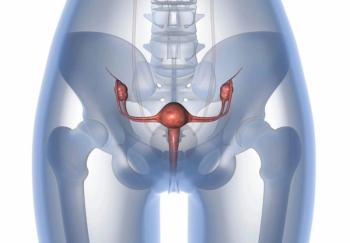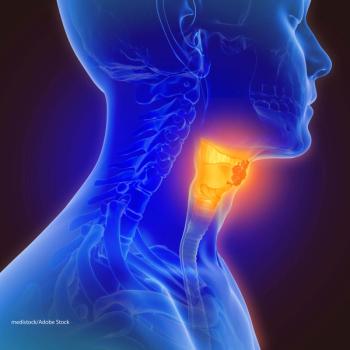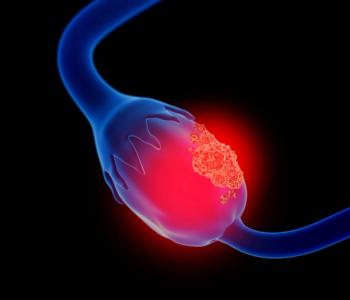
Oncology NEWS International
- Oncology NEWS International Vol 8 No 8
- Volume 8
- Issue 8
Ethyol Approved to Reduce Xerostomia in Head and Neck Cancer
ROCKVILLE, Md-The FDA has approved Ethyol (amifostine for injection) as a therapy to decrease the incidence of moderate-to-severe xerostomia in patients undergoing postoperative radiation treatment for head and neck cancer. The approval came only 2 weeks after the Oncologic Drugs Advisory Committee (ODAC) recommendation.
ROCKVILLE, MdThe FDA has approved Ethyol (amifostine for injection) as a therapy to decrease the incidence of moderate-to-severe xerostomia in patients undergoing postoperative radiation treatment for head and neck cancer. The approval came only 2 weeks after the Oncologic Drugs Advisory Committee (ODAC) recommendation.
Ethyol was originally developed by the US Army to protect troops against radiation. It scavenges free radicals generated by radiation therapy. The drug is approved in the United States to reduce the cumulative renal toxicity associated with the repeated administration of cisplatin (Platinol) in patients with advanced ovarian cancer or non-small-cell lung cancer. In the United States, Ethyol is marketed by ALZA Corporation and co-promoted by U.S. Bioscience
In its ODAC presentation, U.S. Bioscience argued for approval on the basis of a phase III, open-label, randomized prospective study of 303 patients treated at 40 centers in the United States, Canada, France, and Germany. The trial compared 150 patients who received Ethyol plus radiation therapy and 153 who received radiation only. Patients were infused with 200 mg/m² of Ethyol 15 to 30 minutes before each radiation treatment.
The primary endpoints for the study were occurrence of acute and late xerostomia, grade 2 or higher, and acute grade 3 mucositis.
The study showed no difference between the two groups in the incidence of acute mucositis. However, significantly less xerostomia, both acute and late, occurred in patients who received Ethyol in addition to radiotherapy.
Acute xerostomia occurred in 78% of the radiation-only patients vs 51% of those given Ethyol. Of those patients who received radiation alone, 57% had late xerostomia (still present 12 months after treatment) vs 35% of the Ethyol group.
Many of us who followed this study and did not participate in it had hoped to see such an effect, but I was personally surprised by the magnitude of the effect, Walter Curran, MD, professor and chair of radiation oncology, Thomas Jefferson University, told the panel.
Ethyol was well tolerated. Although there were more adverse events in the Ethyol-radiation arm, the majority were moderate to mild in severity. The 150 Ethyol-radiation patients experienced more nausea (44% vs 16%), vomiting (37% vs 7%), hypotension (15% vs 1%), and allergic-type skin reactions (5% vs 0%). However, weight loss was significantly less in the Ethyol-radiation arm. All but one of the 26 patients who stopped taking Ethyol because of side effects completed their radiation treatment.
Biostatistician Gary Koch, PhD, of the University of North Carolina, carried out an independent analysis for U.S. Bioscience of whether Ethyol affected the antitumor efficacy of radiation treatments. He reported regional local control of 72% in the drug-plus-radiation arm vs 71% in the radiation-only patients at 12 months. At 18 months, local control was 71% in the Ethyol patients and 64% in the radiation-alone patients.
Andrew Harwood, MD, of the Romogosa Radiation Center in Lafayette, La, an ODAC consultant, expressed some concern about the possibility of Ethyol protecting tumors in patients treated with definitive radiation without surgery. Its my opinion that there is enough data to support its use in patients who are receiving postoperative radiation, he said. I personally would be hesitant to recommend it for definitive radiotherapy patients because I dont think we have enough [of those] patients entered into the trial to be absolutely confident that there is no tumor protection.
ODAC members sided with Dr. Harwood in their final vote, recommending use of Ethyol only in patients receiving postoperative radiation therapy.
Articles in this issue
over 16 years ago
False positives frequent in CT lung cancer screening trialover 26 years ago
Stereotactic Core Biopsy Establishes Many Prognostic Factorsover 26 years ago
Breast Cancer Prevention With Tamoxifen Appears Cost-Effectiveover 26 years ago
NCI Discovers Gene Variations From Existing Databasesover 26 years ago
CPDR Unveils First Center Solely for Prostate Cancer Researchover 26 years ago
Going Beyond CHOP in Advanced Large-Cell Lymphomaover 26 years ago
Memorial Sloan-Kettering Opens Rockefeller Outpatient Pavilionover 26 years ago
Ernst Wynder, Pioneer in Preventive Medicineover 26 years ago
AHCPR Plans Health Care Market, Managed Care Research Centersover 26 years ago
NSAIDs May Protect Against Common GI CancersNewsletter
Stay up to date on recent advances in the multidisciplinary approach to cancer.


